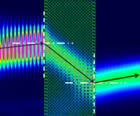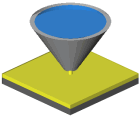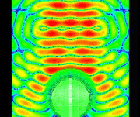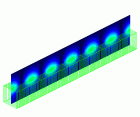Allows you to perform high-frequency wave analysis of various types of microwave components, high-speed digital and analog circuits, various antennas, electromagnetic wave shielding, etc.
 The Poynting for Microwave electromagnetic wave analysis software is a simulator equipped with various functions for high-frequency wave analysis. This product provides the solver based on the FDTD method (footnote 1) and the user-friendly graphical user interface. It gives powerful support to research and development work.
The Poynting for Microwave electromagnetic wave analysis software is a simulator equipped with various functions for high-frequency wave analysis. This product provides the solver based on the FDTD method (footnote 1) and the user-friendly graphical user interface. It gives powerful support to research and development work.
Features
- Since the FDTD method is employed, the simulator offers high computational precision and a wide range of applicability.
- Sub-grids can be used in addition to non-uniform grids, partially fine-grained grids can be freely configured as needed. These enable us to realize computationally efficient and high precision simulations.
- Objects with complex shapes can also be analyzed simply and efficiently by using the boundary fitting function for curved surface shapes that is provided.
- Analysis including active elements can be performed by combined analysis with a circuit simulator.
- Circuit board CAD data and three-dimensional CAD data can be imported.
Functions
- Pre-/post-processing function for creating computational models, automatically creating difference grids, configuring boundary conditions, medium conditions, wave sources, etc.
- Electromagnetic wave analysis function using the FDTD method
- Calculating near-field electromagnetic fields and electromagnetic flows
- Calculating far-field electromagnetic fields (radiated field and scattered field).
- Calculating frequency characteristics such as the time waveforms of voltage and current, S parameters, impedance, etc.
- Visualizing data calculated as above using two- and three-dimensional graphics.
Work Screens
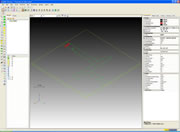
Model creation screen
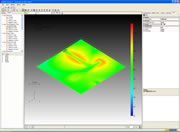
Model creation screen
(Footnote 1) FDTD method is an abbreviation of finite-difference time-domain method, which is a method for calculating the behavior of electromagnetic waves using a computer. This solves the Maxwell equations using difference equations over time and space.
Applications
Examples of applications of the software Poynting to real problems are demonstrated below.
Noise countermeasure evaluation using EMI analysis of a 4-layer printed circuit board model
This is an example of noise countermeasure evaluation using EMI analysis of a 4-layer printed circuit board model. Two models of the 4-layer printed circuit board before and after implementing the countermeasures are analyzed and compared, and the effectiveness of the noise countermeasures is evaluated.
Example of parallel computation of electric fields caused in a printed circuit board model.
In this example, electric far and near fields caused in a printed circuit board model are analyzed. The calculation is done on a parallel computing environment.
Noise characteristic analysis of a power-ground plane with electromagnetic band gap (EBG) structures
This is an example of noise characteristic analysis of a power-ground plane with planar electromagnetic band gap (EBG) structures. The behavior of the electromagnetic noise that propagates within the EBG structure is visualized and the transmission characteristics are evaluated using the S- parameter. A new function (lossy medium) from the new version 3 is used in this example.
Metamaterial with a negative refractive index
This is an example of performing an electromagnetic field simulation of a prism that has a negative refractive index by modeling the metamaterial as a split ring and a wire. This uses a new function (numerical wave source) from the new version 3.
Combined Circuit-Electromagnetic wave analysis using an IBIS model
This is an example of combined analysis of full-wave and IBIS models by using the Poynting HCS linkage (circuit analysis linkage) option and Poynting/HCS IBIS conversion option.
Reflection characteristic analysis of a Mushroom-shaped EBG ground plane
This is an example of reflection characteristic analysis of a Mushroom-shaped EBG ground plane.
Mobile phone in a vehicle
This is an example of analysis of a mobile phone in a vehicle. In this example, the behavior of the electromagnetic waves generated by a dipole antenna that simulates a mobile phone in a vehicle is calculated and evaluated.
Electrostatic discharge (ESD)
This is an example of electrostatic discharge analysis. A numerical model of the ESD-gun is generated and charging and discharging processes are visualized. The discharge current is numerically computed and its current result is compared to the standard current waveform.
Parallel microstrip lines
This is an example of high-precision analysis of the crosstalk that occurs between densely packed wires, to allow the design and implementation of better circuits.
Full body phantom and mobile phone
This is an analysis example of calculating and evaluating the effect on the human body of the electromagnetic waves generated by mobile phones.
Helical antenna
This is an example of analyzing a complexly shaped antenna.
Inverted-F antenna
This is an analysis example of calculating the input impedance and radiation pattern and comparing them with measured values. The electric field distribution around the antenna is displayed as an animation.
Array antenna
This is an example of analyzing an array antenna. The electric field distribution at the top of the antenna is displayed as an animation. The electric field can be rotated to confirm that a circular polarized wave is emitted.
Spiral inductor
This is an example of analyzing a spiral inductor that has a complex shape.
Multilayer sphere irradiated by electromagnetic waves
This is an example of analyzing a multilayer sphere model configured using three-dimensional data in the VOXEL format.
Printed circuit board
This is an example of analyzing a printed circuit board using ECAD-LINK.
Notebook PC
This is an example of analyzing a notebook PC using Poynting and MCAD-LINK.
Horn antenna
This is an example of analyzing a horn antenna.
Waveguide (magic tee)
This is an example of analyzing a waveguide (magic tee).
Allows you to perform optical analysis of optical devices employing near-field optics, photomasks for microfabrication, optical waveguide devices, etc.
 The Poynting for Optics electromagnetic wave analysis software is a simulator equipped with various functions for optical analysis. This product provides the solver based on the FDTD method (footnote 1) and the user-friendly graphical user interface. It gives powerful support to research and development work.
The Poynting for Optics electromagnetic wave analysis software is a simulator equipped with various functions for optical analysis. This product provides the solver based on the FDTD method (footnote 1) and the user-friendly graphical user interface. It gives powerful support to research and development work.
Features
- Since the FDTD method is employed, the simulator offers high computational precision and a wide range of applicability.
- Since sub-grids can be used in addition to non-uniform grids, partially fine-grained grids can be freely configured as needed. These enable us to realize computationally efficient and high precision simulations.
- Supports metallic medium models in the optical wavelength band, and is able to calculate phenomenon such as the enhancement of surface plasmons (footnote 2) that is important in near-field optical applications.
- Equipped with a variety of wave source models that are capable of realistic analysis by setting parameters unique to the field of optics such as the polarization, angle of incidence, pupil shape, incident intensity distribution, use of lenses, etc.
- Able to import a variety of three-dimensional CAD data.
Functions
- Pre-/post-processing function for creating computational models, automatically creating difference grids, configuring boundary conditions, medium conditions, wave sources, etc.
- Electromagnetic wave analysis function using the FDTD method.
- Calculating near-field electromagnetic fields and electromagnetic flows
- Calculating far-field electromagnetic fields (radiated field and scattered field).
- Calculating transmission coefficient and reflection coefficient.
- Visualizing data calculated as above using two- and three-dimensional graphics.
Work Screens
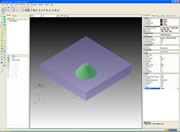
Model creation screen
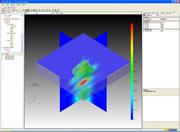
Model creation screen
(Footnote 1) FDTD method is an abbreviation of finite-difference time-domain method, which is a method for calculating the behavior of electromagnetic waves using a computer. This solves the Maxwell equations using difference equations over time and space.
(Footnote 2) Surface plasmon enhancement is a phenomenon in which the electrical field is strengthened by metal surface electrons.
Analysis Examples
These are analysis examples of applying Poynting to real problems.
Superprism and superlens effects in photonic crystals
This is an example of analyzing the superprism and superlens effects of photonic crystals with negative refractive indices.
Analysis of transmission characteristics of photonic crystals
This is an example of analyzing the transmissions characteristics of photonic crystals.
Thermal analysis of an optical fiber probe model
This is an example of the thermal analysis of an optical fiber probe model.
Analysis of optical fiber
The optical intensity distribution, electrical field amplitude, and electrical field phase can be found because the software is also applicable to the optical wavelength region.
Scattering analysis
The scattering field is calculated in order to calculate the scattering cross-section.
Photonic crystal optical waveguide
An optical waveguide that uses a photonic crystal is analyzed.
Plasmon condenser
A plasmon condenser in which a silicon substrate surface is coated with metal and then metal hemispheres are arranged in an arc-shape is analyzed.
Optical thin film
The optical behavior of an optical thin film that could not be computed using the “characteristic matrix method” that is often used for the calculation of optical thin films is visualized.
Photonic crystal directional coupler
A directional coupler using a photonic crystal is analyzed.
Multilayer sphere irradiated by electromagnetic waves
Three-dimensional shape data in the VOXEL format can be imported and analyzed.
Diffraction grating
This is an example of analyzing a diffraction grating that has a periodic distribution of refractive index.
Thermal analysis of a thin film irradiated by a moving light source
This is an example of thermal analysis of a thin film that has a protruding pattern.
Hardware / OS / Peripheral devices / Data formats, etc.
Graphical user interface and options
Personal computer running Windows 8, Windows 7, Windows Vista (PC/AT compatible)
Standalone version solver
Personal computer running Windows 8, Windows 7, Windows Vista (PC/AT compatible)
Parallel version solver
Personal computer running Windows HPC Server 2008 or RedHat Enterprise Linux (PC/AT compatible)
FUJITSU Supercomputer PRIMEHPC FX10
K computer
Structure of the functions and modules of this product
Poynting basic set
Graphical user interface (pre-/post-processing function)
Pre- and post-processing such as creating computational models and visualizing computation results are made possible using this function
Solver (Standalone version or parallel version)
Electromagnetic field analysis can be performed using the FDTD method by using this function.
Poynting optional product
Poynting ECAD-LINK (CAD data)
PCB CAD data can be imported into Poynting by using this function.
(Supported PCB CAD) PCB CAD that is able to output ODB++ data or other data
Poynting MCAD-LINK (CAD data)
Various three-dimensional CAD data can be imported into Poynting by using this function.
(Supported 3D-CAD) 3D-CAD that can output STL files
Poynting VOXEL-LINK (VOXEL data)
VOXEL data can be imported into Poynting by using this function.
Poynting HCS combination (circuit analysis combination) option
Combined analysis with the following circuit simulators is possible by using this function.
- Directly combine Poynting and HCS (footnote 1) using sequential data exchange for unified analysis of electromagnetic waves and circuits.
- Derive the S parameter of a transmission line, etc. by electromagnetic wave analysis using Poynting and then execute circuit analysis by importing this data as an HCS element model.
Various services related to this product
Wide range of support from installation to problems during use
Software support contracts are available for support by email or telephone.
Our dedicated staff provide thorough support in the event that any of our customers experience any problems.
Details of services
Installation training service
Provides explanations of how to perform calculations, descriptions of how to operate, and training.
Q&A service
Responds to customer questions by email or telephone.
Upgrade service
Periodically distributes upgraded versions of packages.
Outsourced analysis service
Listens to the requests of the customer, performs the analysis at Fujitsu, and reports the results to the customer.
 The Poynting for Microwave electromagnetic wave analysis software is a simulator equipped with various functions for high-frequency wave analysis. This product provides the solver based on the FDTD method (footnote 1) and the user-friendly graphical user interface. It gives powerful support to research and development work.
The Poynting for Microwave electromagnetic wave analysis software is a simulator equipped with various functions for high-frequency wave analysis. This product provides the solver based on the FDTD method (footnote 1) and the user-friendly graphical user interface. It gives powerful support to research and development work.


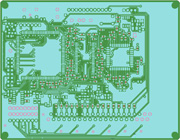
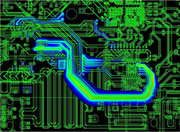
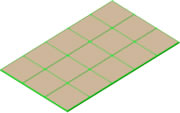
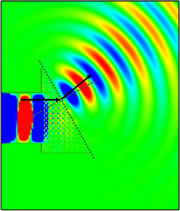
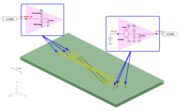
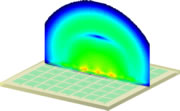

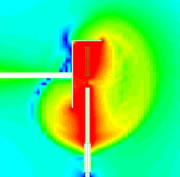

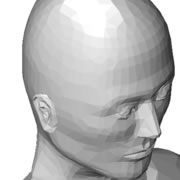

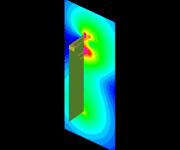
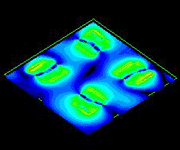

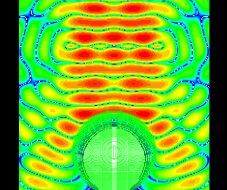

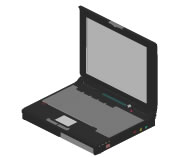
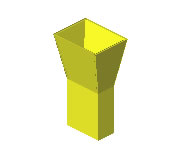


 The Poynting for Optics electromagnetic wave analysis software is a simulator equipped with various functions for optical analysis. This product provides the solver based on the FDTD method (footnote 1) and the user-friendly graphical user interface. It gives powerful support to research and development work.
The Poynting for Optics electromagnetic wave analysis software is a simulator equipped with various functions for optical analysis. This product provides the solver based on the FDTD method (footnote 1) and the user-friendly graphical user interface. It gives powerful support to research and development work.

